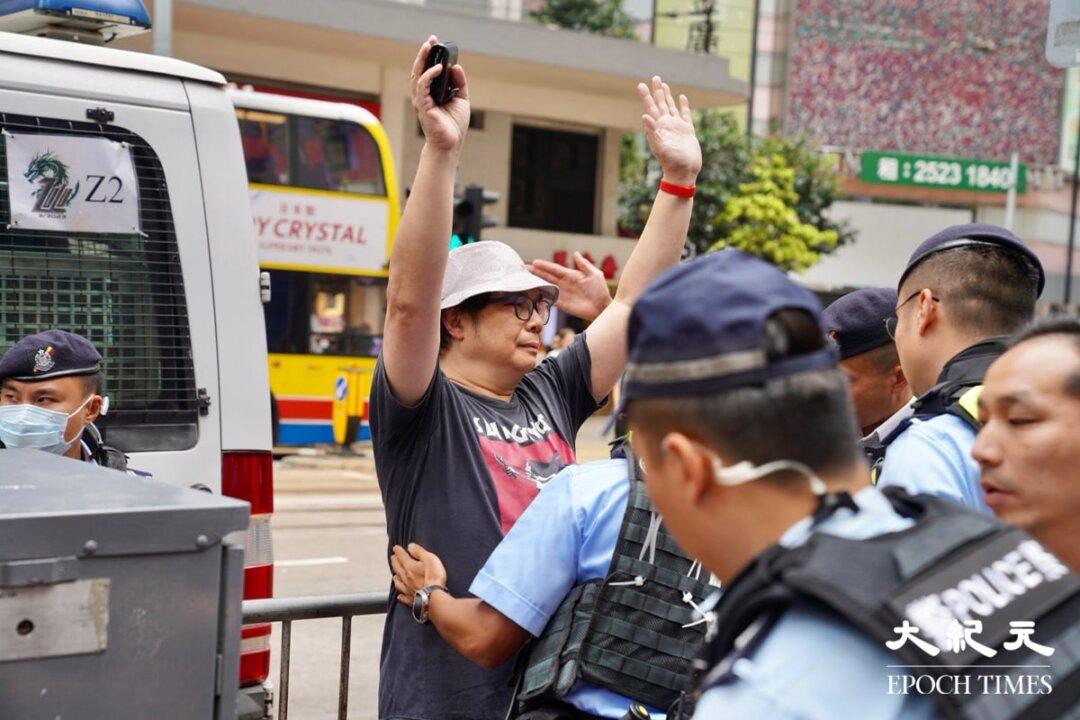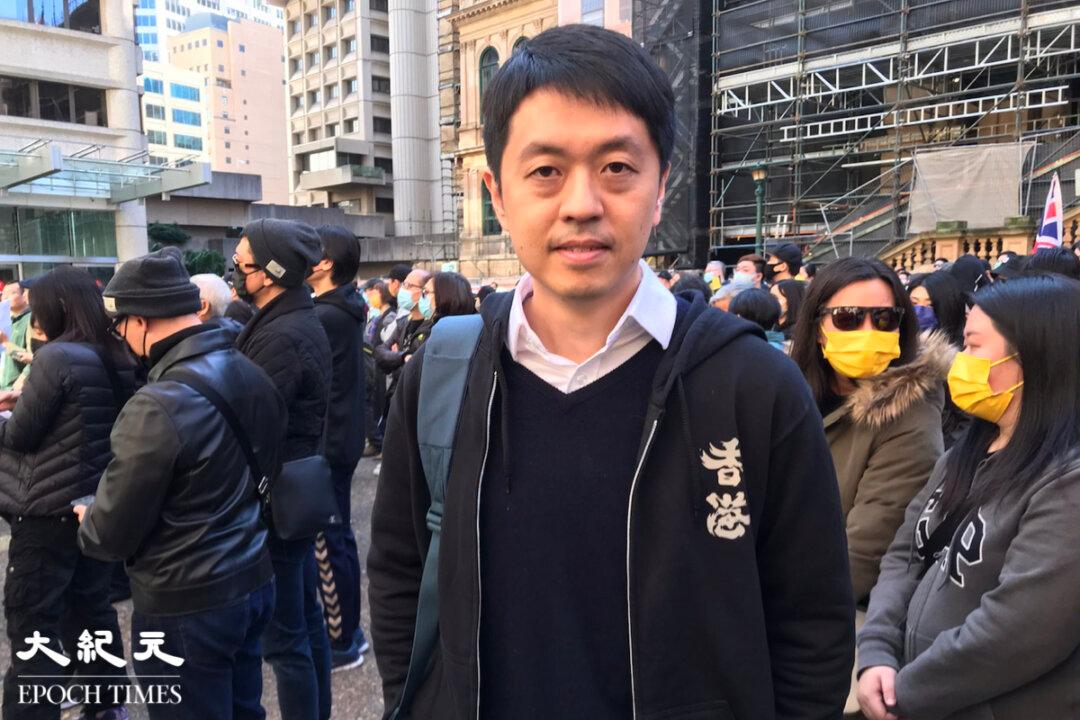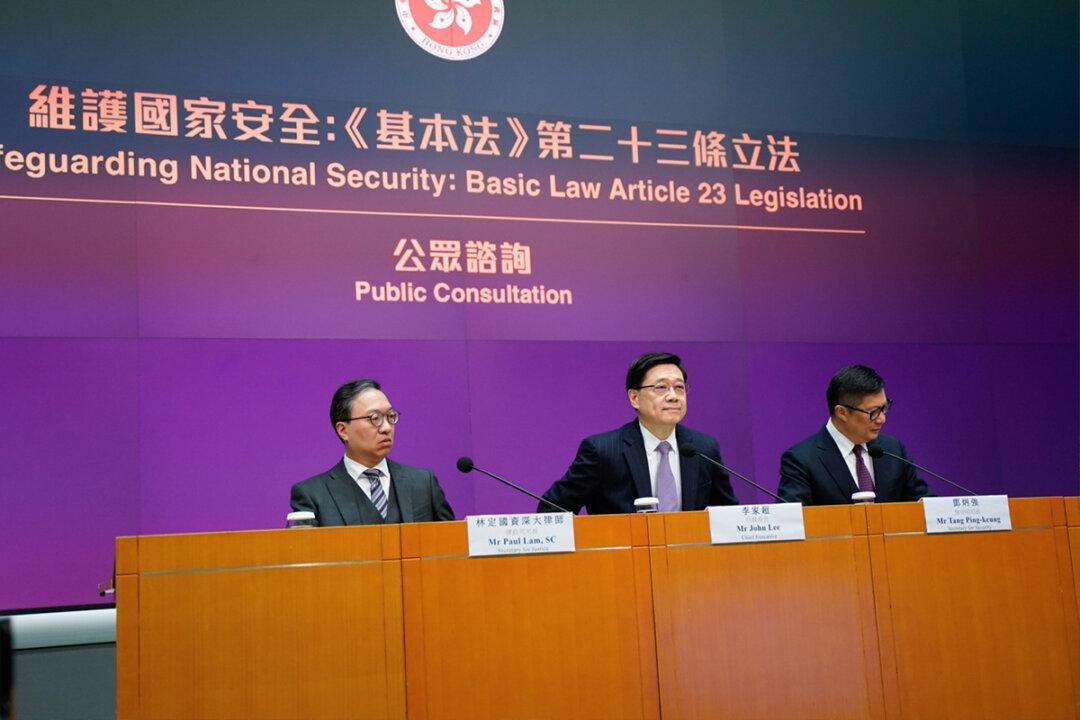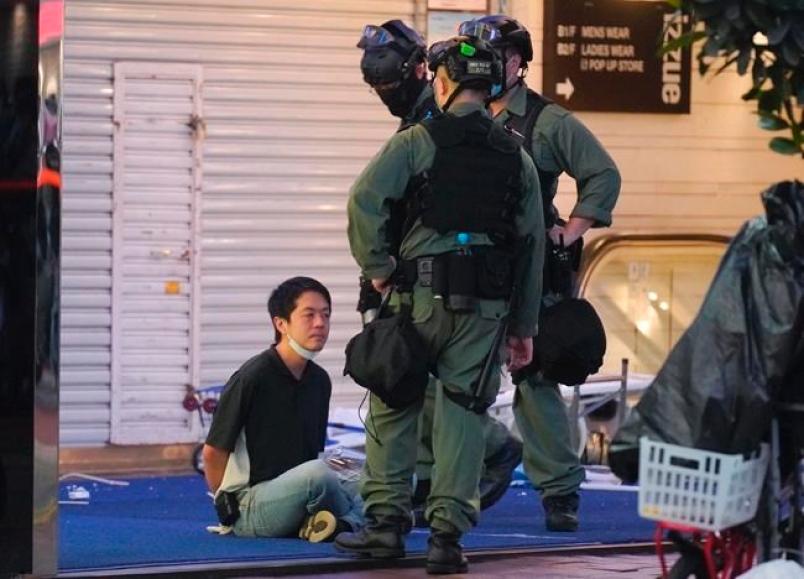Glorious Fast Food restaurant, located in Central, Hong Kong, had three pieces of street art on its exterior walls as a set of graffiti, depicting a man in a construction worker’s gear, a plump woman, and a rabbit-like animal. What they had in common is that they all wore a yellow safety helmet commonly used by construction workers in Hong Kong, and each is eating a bowl of noodles.
On Saturday, Aug. 19, the restaurant posted on its Facebook page, which had rarely been updated in recent years, revealing that government officials appeared at the restaurant and told the owner that the paintings on the outside walls were suspected of violating the National Security Law and that they had to be removed. They felt very frustrated and helpless.




